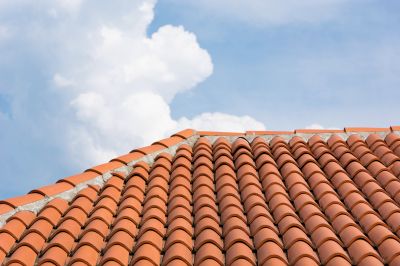Ultimate Selection of Products for Red Tile Installation Success
Find the most reliable and high-performance products tailored for red tile work to enhance your craftsmanship and durability.
 Red tile installations are a popular choice for adding vibrant color and distinctive character to both interior and exterior spaces. Achieving a durable and visually appealing red tile surface involves selecting the right products and following proper installation techniques. The process typically includes preparing the surface, choosing suitable adhesives, and applying appropriate grouts to ensure longevity and aesthetic appeal. Whether renovating an existing space or undertaking a new project, understanding the essential products involved can help ensure a successful outcome.
Red tile installations are a popular choice for adding vibrant color and distinctive character to both interior and exterior spaces. Achieving a durable and visually appealing red tile surface involves selecting the right products and following proper installation techniques. The process typically includes preparing the surface, choosing suitable adhesives, and applying appropriate grouts to ensure longevity and aesthetic appeal. Whether renovating an existing space or undertaking a new project, understanding the essential products involved can help ensure a successful outcome.
Top Overall Option
Premium Tile Adhesive
A high-quality tile adhesive designed for red tile installations offers excellent bonding strength and flexibility. It is suitable for various substrates and provides a reliable base for durable, long-lasting results. This adhesive is formulated to resist cracking and moisture, supporting the integrity of the tile surface over time.
Types of Products For Red Tile Installations
Cement-Based Tile Adhesive
A versatile and widely used adhesive that provides strong bonding for red tiles on floors and walls.
Epoxy Grout
A durable grout option resistant to stains and moisture, ideal for high-traffic or wet areas.
Polymer-Modified Thinset Mortar
Enhanced thinset that offers improved adhesion and flexibility, suitable for challenging substrates.
Pre-Mixed Tile Grout
Convenient grout that is ready to use, simplifying the installation process while providing consistent color and texture.
Waterproof Sealant
Protects the tile surface and grout joints from water infiltration and staining.
Tile Spacers
Ensures uniform joint widths, contributing to a professional and balanced appearance.
Notched Trowels
Tools used to apply adhesive evenly, ensuring proper coverage and bond strength.
Grout Float
A tool for spreading and pressing grout into joints for a smooth finish.
Tile Nippers
Assist in cutting and shaping tiles to fit complex or irregular spaces.
Cleaning Sponges
Used for removing excess grout and adhesive, maintaining a clean tile surface.
Tile Leveling System
Helps achieve flat, even tile surfaces by minimizing lippage during installation.
Rubber Mallet
Provides gentle tapping to set tiles securely without damaging them.
Grout Sealer
Enhances resistance to stains and moisture, prolonging the life of grout lines.
Edge Trim
Finishing strips that create clean, professional edges around tile installations.
Tile Cutter
Tools for making precise cuts in tiles, essential for fitting tiles into designated spaces.
Leveling Clips
Assist in achieving a flat, even surface by leveling tiles during installation.
Flexible Sealant
Accommodates movement and prevents cracking in tiled surfaces.
Popular Choices
Commonly used for various tile types, including red tiles, offering reliable bonding.
A traditional grout option that provides solid fill and color consistency.
Popular for areas exposed to moisture, offering stain and chemical resistance.
Favored for ease of use and quick application, suitable for DIY projects.
Frequently chosen to protect tiles and grout in bathrooms and kitchens.
Essential for achieving consistent joint widths and professional-looking results.
Widely used for applying adhesive evenly across surfaces.
Commonly used for pressing grout into joints for a smooth finish.
Popular for shaping tiles around obstacles and edges.
Regularly used to clean excess grout and adhesive during installation.
Trending for helping achieve flat, level tile surfaces efficiently.
Frequently used to gently tap tiles into place without damage.
Often applied to extend grout life and prevent staining.
Popular for finishing edges cleanly and professionally.
A common tool for precise cuts, especially in custom tile layouts.
Popular among DIYers for ensuring even tile placement.
Chosen to accommodate movement and prevent cracks in tiled surfaces.
The selection of installation materials is crucial for maintaining the integrity of red tile surfaces. High-quality adhesives are necessary to secure tiles firmly to various substrates, preventing issues such as cracking or detachment over time. Grouts are equally important, as they fill the gaps between tiles and contribute to the overall durability of the installation. Special considerations for red tiles include choosing products that complement their color and texture while providing resistance to moisture and temperature changes.
In addition to adhesives and grouts, various tools and accessories facilitate the installation process. These include spacers for uniform joint widths, trowels for precise application, sealants for waterproofing, and cleaning supplies to maintain the tiles’ appearance. Proper selection and application of these products can significantly influence the final result, ensuring that the red tile installation remains attractive and functional for years to come.
Overall, the key to a successful red tile project lies in understanding the different product options available and selecting those that best suit the specific requirements of the space. From surface preparation to finishing touches, each component plays a vital role in creating a durable and visually appealing installation. With careful planning and the right products, homeowners and professionals alike can achieve satisfying results that highlight the vibrant beauty of red tiles.
Key Buying Considerations
- Compatibility with red tile material and surface type
- Moisture resistance for wet areas or outdoor installations
- Bond strength and flexibility of adhesive products
- Color matching or complementing the red tile hue
- Ease of application and workability for DIY projects
- Durability and longevity of grout and sealants
- Resistance to staining and discoloration
- Ease of cleaning and maintenance requirements
- Compatibility with existing surfaces and substrates
- Availability of matching accessories and tools
- Application temperature ranges and curing times
- Environmental conditions during installation
- Resistance to cracking and movement
- Recommendations for specific installation environments
- Cost-effectiveness and value for the project size
